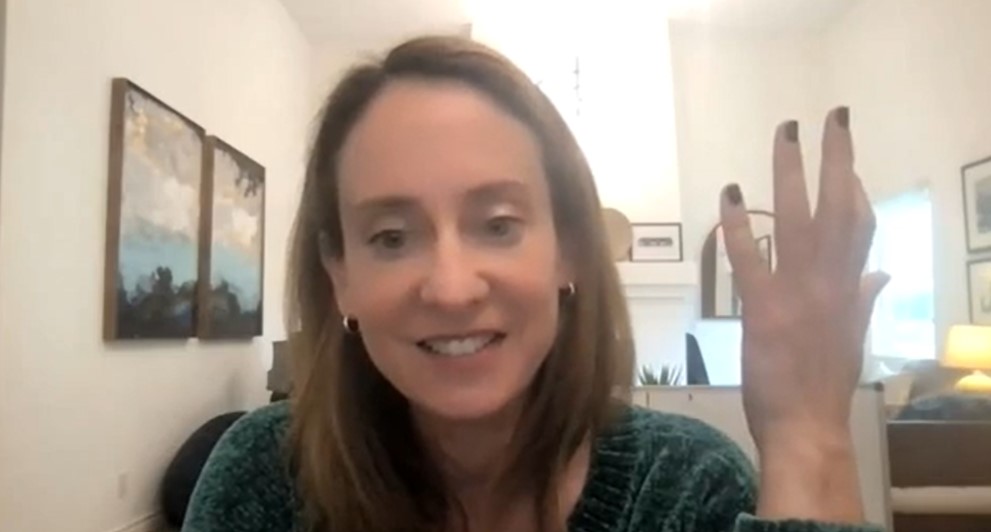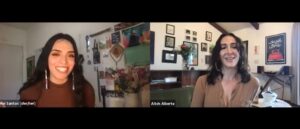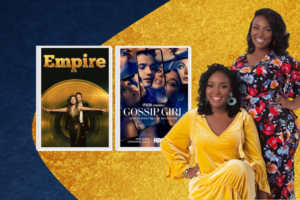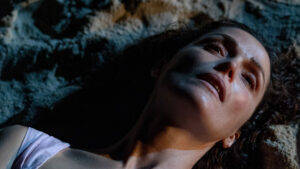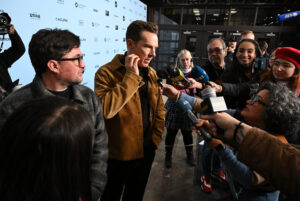By Stephanie Ornelas
“The reason I call it story breaking is [because] you’re cracking the story open. So anytime I need to crack open a story, I use some version of this.” Seasoned showrunner and screenwriter Dara Resnik (Pushing Daisies, Daredevil, Jane the Virgin) said this to Sundance Collab members after sharing her season grid and outlines during Sundance Collab’s Master Class: How to Break a Story with Dara Resnik. Resnik has been writing and producing television for nearly two decades — most recently she co-created Home Before Dark for Apple TV+ — and in between projects, she teaches the next generation of writers in USC’s Peter Stark Producing Program and the John Wells Division of Writing for Screen & Television. She was also a creative advisor for Sundance Institute’s 2021 and 2022 Episodic Labs, and during this Collab course, class was definitely in session.
“Our brains are wired for narrative. Story is a really important part of who we are as people. We enjoy our food more when we know where it came from, we enjoy a painting more when we understand where that piece of artwork came to be,” explains Resnik.
She goes on to explain how storytelling in film can be such a crucial educational tool for so many, including those in marginalized communities who are demanding change. For example, in countries where women’s rights are being suppressed, film has allowed women to see what life is like in communities outside of their own where women have more rights than they do.
“On a macro level, I’ve been all over the world teaching. I’ve taught for the Middle East Media Initiative where I met women from Saudi Arabia who said they believe that they have the right to drive now because of the content that they were able to access. […] So, the stories that we tell are important and accessible globally at this point, and we have to take that craft seriously.”
Using the Netflix series Stranger Things as an example, Resnik walked Collab members through the process of breaking a story, mapping out character and story arcs, and crafting a scene, all while answering questions from participants in between. And while Resnik did not write for the popular series herself, she explains, “I like to teach Stranger Things because they have individual storylines. My guess is part of that has to do with the fact that they were shooting with kids. It makes it a relatively, I wouldn’t say easy show to break, but it’s one where you can break out the storylines and understand how to break out separate storylines that then intertwine with one another. And it’s a show that a lot of people have seen.”
Building her own virtual writers room with some Collab members acting as virtual panelists, Resnik broke down and examined story grids and layouts that she uses personally throughout her own writing process.
Here are just a few takeaways from the three-and-a-half-hour Master Class. Remember, you can access a full recording and many other Collab courses with a Sundance Collab membership.
The power of the writers room

Character development was a huge topic of Resnik’s course, and she talked a lot about how crucial it is that viewers can familiarize themselves with the characters of the story. That success comes from the writers room — sharing ideas and having an open mind.
“We’re watching from all over the world now, sometimes on our laptops and even our phones. These characters are in our beds with us. These characters are in our homes with us. So what you want is a certain kind of familiarity and a certain kind of unexpectedness,” explains Resnik. “And that’s one of the things I love about a writers room. You come in with these archetypes and the more humans with different life experiences and different perspectives pitch on those characters, the more you reveal layers of the characters that even you, as the showrunner, didn’t necessarily know work. You want these people to feel a little bit familiar and also specific.”
Determining whether your story would work best for TV or a full-length film
When it comes to figuring out if your story is right for a feature film or a television series, Resnik explains that it depends on how long a particular story can carry on and still keep the interest of viewers — and streaming has really changed the game.
“I think it’s changed a lot in the streaming era,” says Resnik. “I think a lot of things that used to be ideas were definitely movies because they wouldn’t sustain 22 episodes a season for 100 episodes — that used to be sort of the barometer: How long do we think we can get this idea to go? But I do think there are some things that feel organically close-ended. If you feel like you can tell the story in a couple of hours, tell the story in a couple of hours.”
“These days, there are literally 700 shows to choose from, each season, plus all of the other stuff from the beginning of television history until now for people to access. So it better hold your interest. If you think you can sustain someone’s interest because you have that much to say about it, because the character has that deep of a drive and deep of a want for that many episodes, then make it a television show. But otherwise, write a movie.”
Creating a visceral want over an intellectual want
After playing a recap of the first season of Stranger Things for Collab members, Resnik broke out a blank story grid and began listing characters and their motives. But she left most of the grid blank so that participants could shout out ideas of their own as they built out the season themselves.
 “Everybody is basically looking for Will in the first episode, which is good because there is almost no better want for your character to carry you through a season of television than to find a child, find a parent, reconnect. What you’re looking for is a really visceral want, meaning not an intellectual want. Emotionally, why am I and the audience invested [in this story]? What’s really great about Stranger Things is they do some really cool sci-fi stuff, but they put a child at the center of it. Everyone’s on board with what that journey is.”
“Everybody is basically looking for Will in the first episode, which is good because there is almost no better want for your character to carry you through a season of television than to find a child, find a parent, reconnect. What you’re looking for is a really visceral want, meaning not an intellectual want. Emotionally, why am I and the audience invested [in this story]? What’s really great about Stranger Things is they do some really cool sci-fi stuff, but they put a child at the center of it. Everyone’s on board with what that journey is.”
Resnik’s goal was that by the end of the class, Collab members would have a better understanding of what goes on in the writers room and be compelled to start their own pilot. Participants walked away with insight on crafting a particular scene and structuring an episode versus a season of television.
“My hope is that by the end of today, you guys are gonna understand what goes on in the magic black box of a writers room. I feel like people think you go into a writers room, order lunch, sprinkle pixie dust on everything, and magically a story and a script come out. You know for better or for worse, that’s not how it works. It’s a craft. It’s something that you can learn how to do, and it’s a job. I always like to remember how exciting this work actually is.”
Experience the full Master Class: How to Break a Story with Dara Resnik and many others by visiting https://collab.sundance.org.




